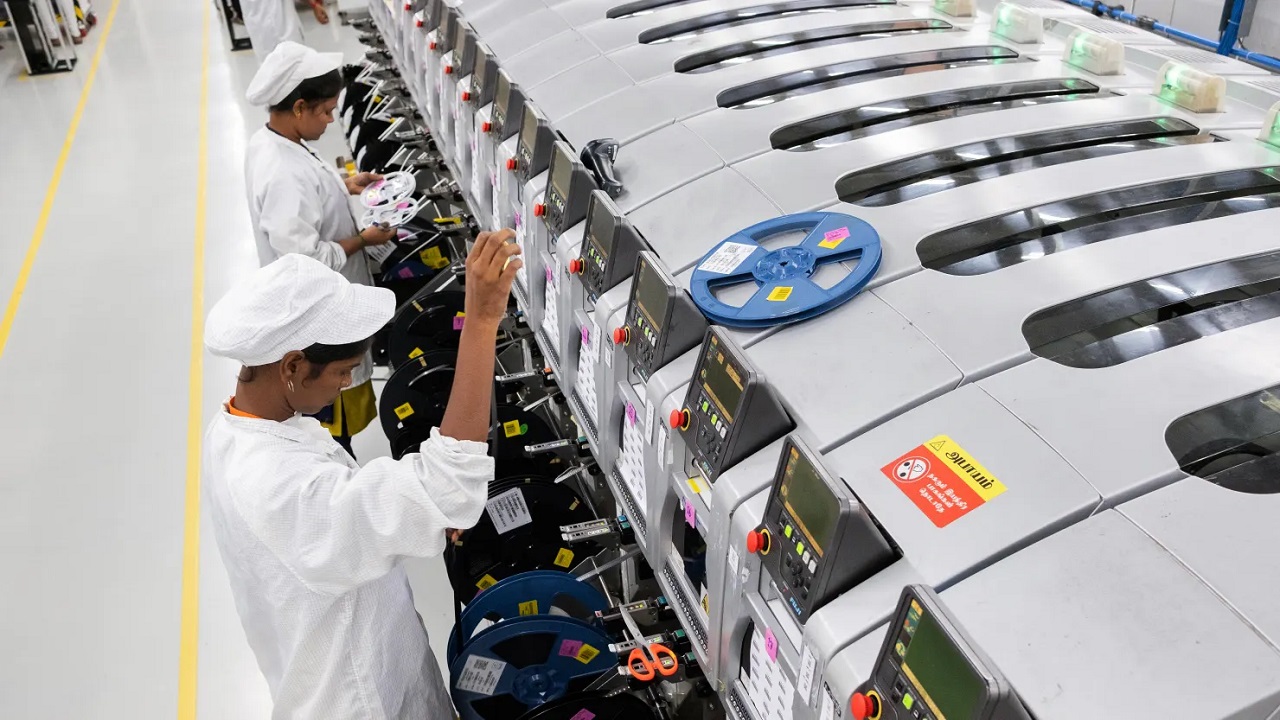Manufacturing Wars: China’s Strategic Blockade on India’s Tech Sector
Context
India has been making significant strides in electronics manufacturing, particularly in smartphone production, through initiatives like ‘Make in India’ and the Production-Linked Incentive (PLI) scheme. Global giants like Apple have expanded their footprint in India, with Foxconn, Pegatron, and Tata Electronics playing crucial roles in assembling iPhones. However, India still depends on China for critical components, specialised machinery, and skilled manpower.
In mid-January 2024, China imposed restrictions on travel for its engineers and technicians working in Foxconn’s Indian facilities. Additionally, it:
-
Recalled Chinese workers already in India.
-
Curbed exports of critical specialised manufacturing equipment, over which China holds a monopoly.
While Foxconn has attempted to fill the gap with Taiwanese workers, the real challenge is the stoppage of high-end manufacturing equipment, which is crucial for smartphone assembly. This move by China could significantly impact India’s manufacturing ambitions and its goal to become a global production hub.
What is at Play?
China’s decision is not merely an economic move but a strategic geopolitical action to counter India’s rise as a manufacturing competitor.
1. Restricting Knowledge Transfer
-
China aims to prevent the tacit transfer of expertise from Chinese technicians to their Indian counterparts.
-
This will slow down India’s capability development in high-tech manufacturing.
2. Weaponising Supply Chains
-
China’s curbs on equipment exports are an attempt to cripple production in India.
-
By leveraging its dominance in global supply chains, China is making it harder for India to become self-sufficient.
3. Countering the ‘China Plus One’ Strategy
-
Due to U.S.-China trade tensions, global corporations are adopting a ‘China Plus One’ strategy to reduce dependence on China.
-
India, Vietnam, and Mexico have emerged as alternatives.
-
China wants to retain its position as the key supplier and slow down India’s rise as a competitive alternative.
India’s Response: Strengthening Domestic Capabilities
Over the past few years, the Indian government and state governments have focused on strengthening Apple-Foxconn’s investments in India. This has resulted in:
-
Assembling of iPhone 15 at Foxconn’s Tamil Nadu facility and Tata Electronics’ Karnataka plant in 2023.
-
$14 billion worth of iPhones assembled in India in FY 2024.
-
iPhone 16 Pro models being assembled in India for the first time in 2024.
-
Padma Bhushan awarded to Young Liu (Foxconn Chairman) in 2024, reflecting Foxconn’s importance to India’s manufacturing ecosystem.
Despite these achievements, India remains primarily a final assembly hub and needs to develop a complete manufacturing ecosystem.
A Pillar of ‘Make in India’
India has been heavily investing in electronics manufacturing to reduce import dependency.
1. Production-Linked Incentive (PLI) Scheme
-
Budget allocation increased from ₹6,125 crore ($0.70 billion) in 2024 to ₹8,885 crore ($1.02 billion) in 2025.
-
₹6,600 crore ($0.76 billion) disbursed to Apple’s contract manufacturers (Foxconn, Pegatron, Tata Electronics) between 2022-23 and 2024-25.
-
Custom duties on key mobile components removed to make manufacturing cost-effective.
2. India-China Economic Interdependence
-
China’s restrictions came just months after India and China agreed on a border patrolling arrangement in October 2024 to end a four-year military standoff.
-
India still depends on China for components and machinery, making economic negotiations a necessity.
-
This incident shows that India-China relations are shaped by economic factors as much as by territorial disputes.
India’s Long-Term Strategy
India must view this challenge as an opportunity to accelerate self-reliance in electronics manufacturing.
1. Strengthening Domestic Manufacturing
-
Focus on producing key components domestically rather than just assembling smartphones.
-
Encourage ancillary industries through incentives and technology-sharing clusters.
2. Expanding the National Manufacturing Mission
-
The National Manufacturing Mission in Union Budget 2025 is a positive step.
-
Needs strong financial backing to develop technology clusters and enhance skill development.
3. Developing a Skilled Workforce
-
On-site training and vocational programs should focus on industry-specific skills.
-
Collaborations with academic institutions to develop a pipeline of highly skilled engineers.
4. Encouraging Private Investment
-
More private capital should be invested in indigenous contract manufacturers.
-
Strengthening domestic brands to compete globally.
Conclusion
China’s restrictions on Foxconn workers and equipment exports highlight the geopolitical nature of global supply chains. While these actions may create short-term disruptions, they also serve as a wake-up call for India to reduce its reliance on China.
By focusing on domestic component production, skill development, and private sector growth, India can transition from being a final assembly hub to a global leader in advanced electronics manufacturing. A long-term vision and strategic policymaking will be crucial to achieving this goal.




Comments (0)